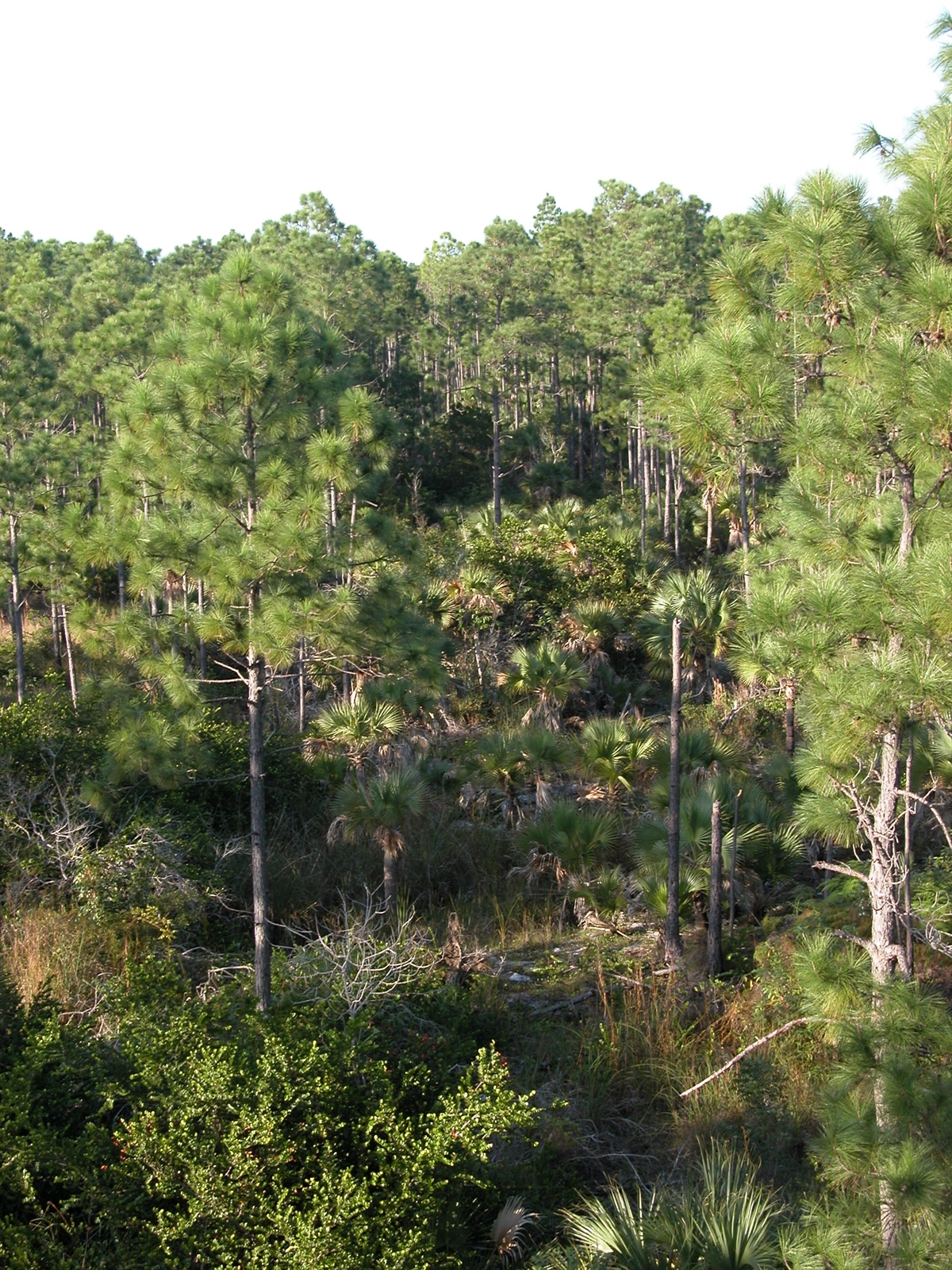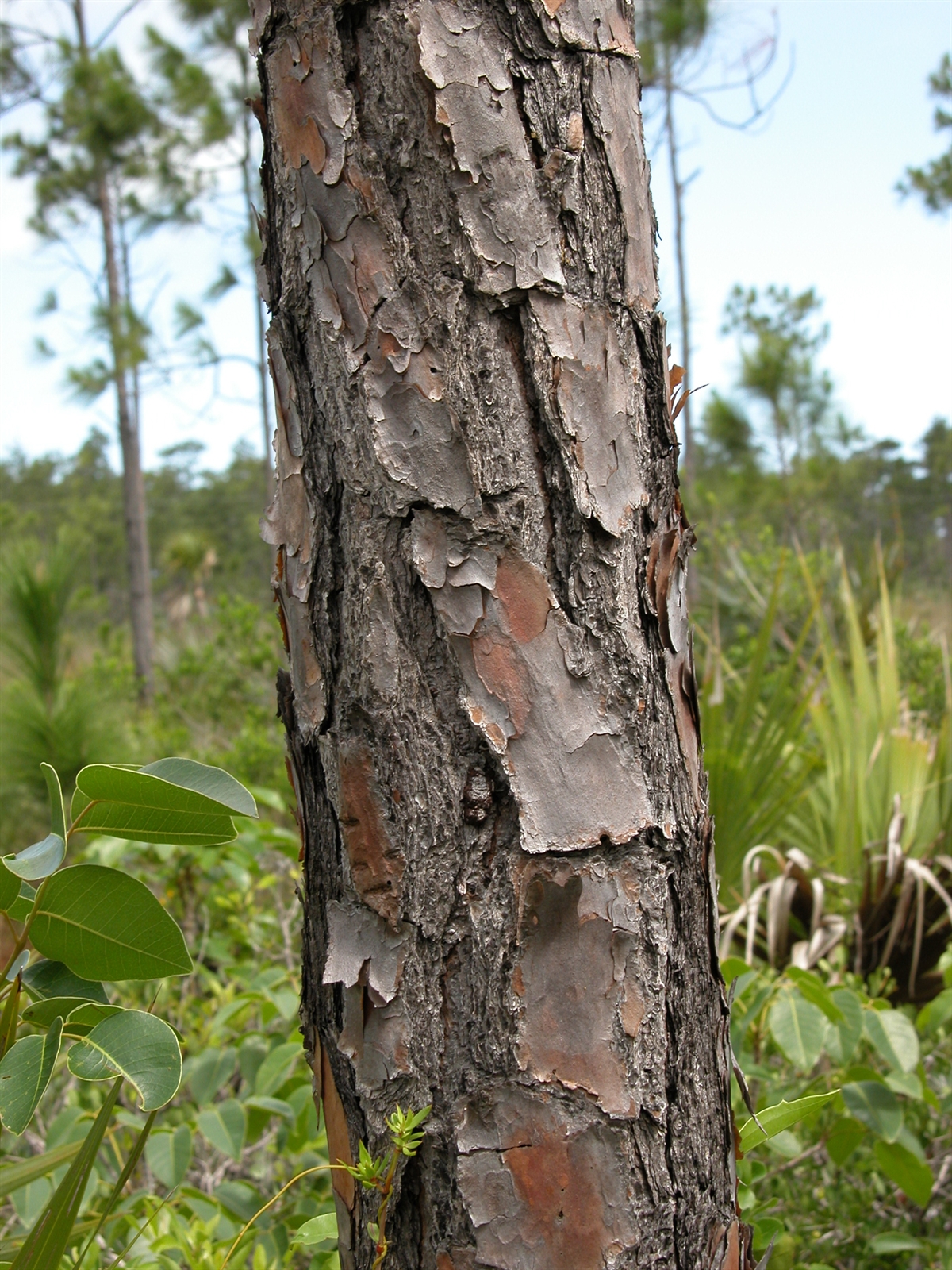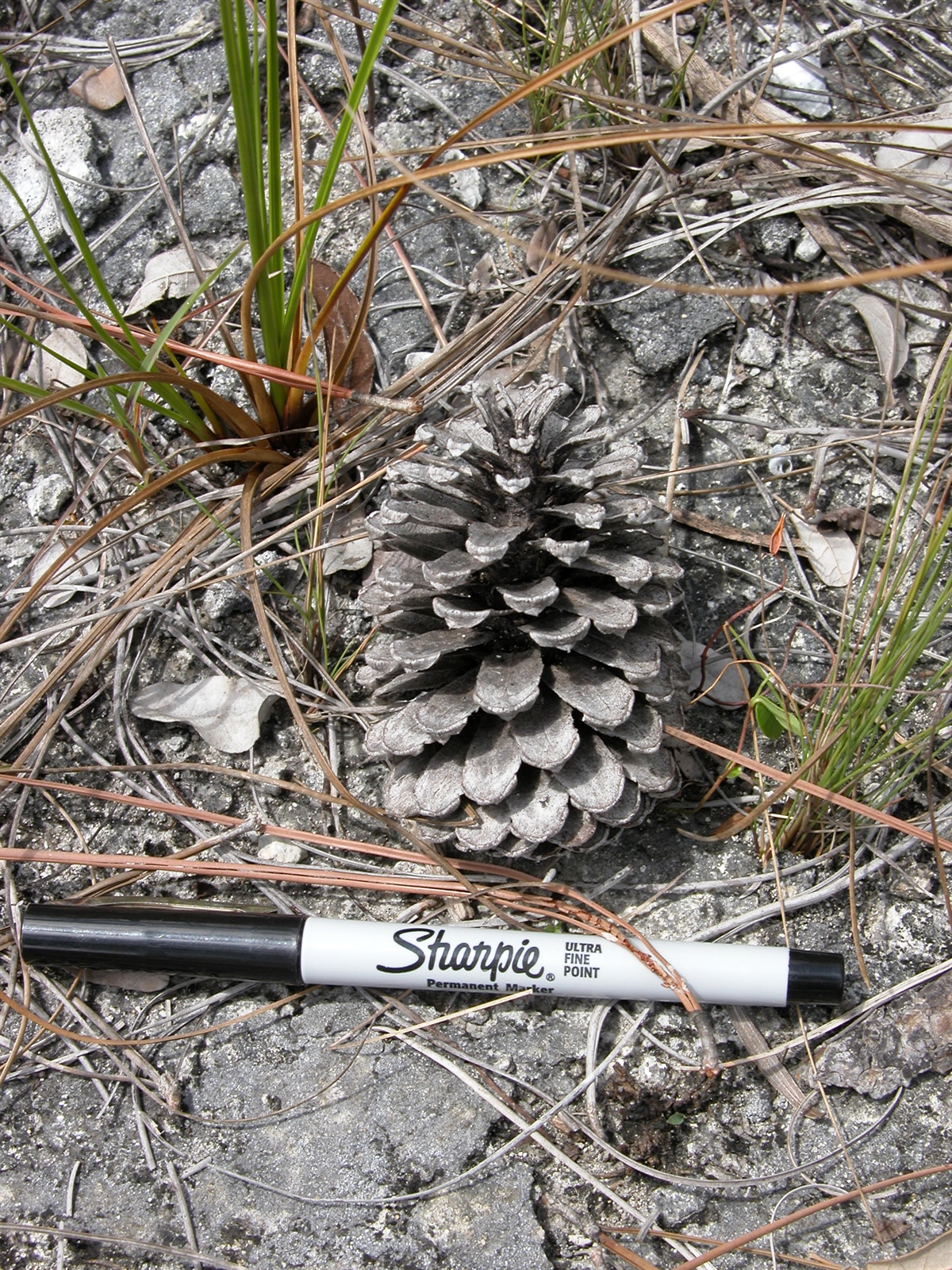Habit: Pinus caribaea var. bahamensis grows as a tree to 30 meters in height and 75 centimeters in diameter. The trunk largely unbranched forming a main trunk and a crown. The bark dark reddish brown flaking off in plates. The leaves are needles are produced in fascicles of 2 or 3 and are to 25 cm in length.
Pinus caribaea var. bahamensis is monoecious and the reproductive structures are cones. The pendulous microsporangiate cones are solitary or in groups, to 4 cm in length and 1 cm in diameter arising from the base of new shoots. There are 15 – 20 series plates underneath which are the microsporagium. The megasporangiate cones are solitary, to 15 cm in length and 4 cm in diameter. There are series of scales underneath the ovules are located, quad-, pent-, or hexangular in outline. The scales are 2-4 millimeters thick with a central protruding bump and spine. The seeds are winged.
Habitat: Pinus caribaea var. bahamensis grows in Pine Woodlands.
Distribution: Pinus caribaea var. bahamensis occurs throughout the northern Lucayan Archipelago on Abaco, Andros, Grand Bahama, and New Providence as well as on North and Middle Caicos and Pine Cay in the Turks and Caicos Islands. The variety is endemic to the Lucayan Archipelago.
Medicinal/Cultural/Economic usage: Pinus caribaea var. bahamensisis not used medicinally or culturally in the Lucayan Archipelago. It was however extensively logged throughout the early and mid 20th century for lumber and to make cardboard pulp for shipping for the Owens Illinois glass company.



